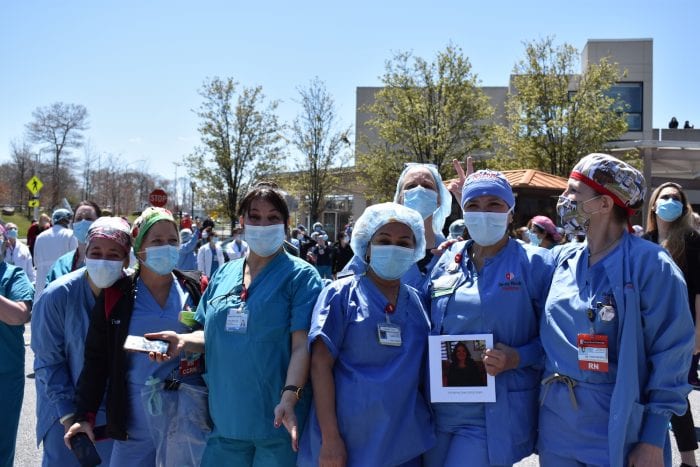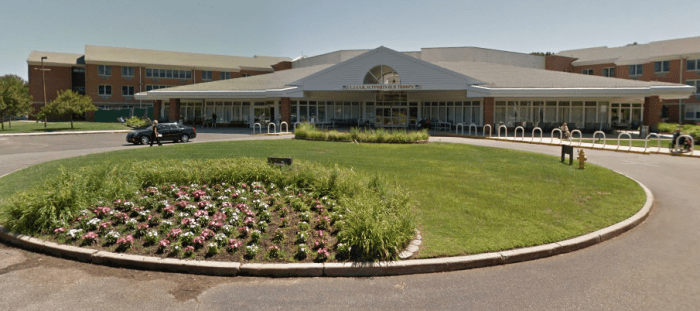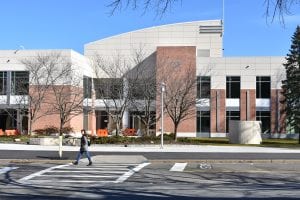Elected officials and residents are weighing in on proposed and possible developments along the Route 25A corridor in St. James and Stony Brook.
While the development of Gyrodyne — which would include subdividing its 75-acre land for a hotel, assisted living facility, offices and sewage plant — has been a hot topic of conversation on both sides of the town line, many are also keeping their eyes on the sites of the International Baptist Church in Stony Brook and BB & GG Farms and Nursery in St. James.
On The Northwind Group website, under the proposed developments tab, is listed a 55-and-over community called Stony Brook Meadows that will stand on approximately 12 acres of property.
According to the website, it “will address a need for housing for a valued regional resource and at the same time, help to alleviate various housing concerns.”
On its site, Northwind said the development will result in little or no impact on local streets and, as far as the economic impact, the property is currently not taxed due it being occupied by a religious institution, and “the redevelopment will result in increased tax dollars for the Town of Brookhaven, Suffolk County and New York State.” The website also claims it will provide much-needed jobs during the construction phase, and any new community residents will support local businesses.
In the Town of Brookhaven’s Route 25A — Three Village Area: Visioning Report, the International Baptist Church was cited as an ideal spot for an assisted living facility due to residents not driving and staff members coming and going at various hours. In order for the development to go ahead, a zoning variation would be needed from the town.
As for BB & GG, Suffolk County Executive Steve Bellone (D) signed legislation in October that gave the county Legislature the go ahead to appraise the land for possible county purchase under the Drinking Water Protection Program. According to the resolution, an application was made by William Borella for the property to be considered for inclusion in the Suffolk County Farmland Purchase of Development Rights Program, which was approved by the Legislature in July. County Legislator Kara Hahn (D-Setauket) said the farm is currently in the appraisal status.
“Kara is exactly in the right direction by putting the resolution forward, and I strongly support both the concept of protecting this part of our historic North Shore and all of the national and local treasures that are found there.”
— Steve Englebright
Resolution Proposed
At its Feb. 11 general meeting, the county Legislature tabled a resolution to study a segment of road in the vicinity of the Smithtown and Brookhaven border. The resolution, introduced by Hahn, would allow the county to analyze the Route 25A corridor in St. James and Stony Brook to determine the regional impacts associated with proposed and planned development projects in this area. It would also identify vacant and preserved parcels as well as existing zoning, amongst other criteria. The resolution will be voted on at a future Legislature general meeting. The next general meeting, March 3, will be held in Riverhead.
State Assemblyman Steve Englebright (D-Setauket), who has addressed the Smithtown Planning Board at past public meetings about the downfalls of development along the corridor, said in a phone interview that the stretch of road in the area was recognized by the state in the early 1970s for its historic importance and a number of structures along or right off the route are on the National Register of Historic Places.
Englebright said nearby Stony Brook Harbor is the last unspoiled harbor in the vicinity. He added it has been sheltered by the Head of the Harbor village and wise land-use policies, and the proposed county legislation is important to reconcile some of the issues in the area.
“Kara is exactly in the right direction by putting the resolution forward, and I strongly support both the concept of protecting this part of our historic North Shore and all of the national and local treasures that are found there,” Englebright said.
Hahn said there needs to be real discussions in Smithtown, because while she understands development is needed, she said there needs to be smart planning.
“There’s just a lot of availability in an area that is bucolic and historic, and it would be wonderful if there could be a check on development,” she said.
The county legislator added, regarding the sewage treatment plant that is planned for the Gyrodyne property, that other spots may be more beneficial to many areas of the town. The property is located on the northern part of Smithtown. Currently, plans are to hook up Lake Avenue businesses to the sewage plant. She said there is a lot of state money for downtown development if it is done properly, and if a sewage plant would be positioned centrally, it can not only benefit St. James, but also Nesconset, Smithtown and Jericho Turnpike to get businesses off antiquated cesspools and hooked up to sewers.
“It’s shortsighted to propose a project that would only address one downtown, when properly placed it could help several, and spur economic development, help water quality, and help out development where it should be in our downtowns and by our transportation zones,” Hahn said.
“We take our responsibility as stewards extremely seriously. This plan has been a long time in the making. We have worked closely with the Town of Smithtown to accomplish their goals.”
— Richard Smith
Gyrodyne the Catalyst for Controversy
At the Legislature meeting, residents spoke for and against the resolution. Richard Smith, a member of the Gyrodyne board of trustees and mayor of Nissequogue, asked legislators to vote “no” when it came to the resolution.
Smith said he and the Gyrodyne board have worked with the Smithtown Planning Department to fulfill the requirements of the town, which he said has done comprehensive studies of what the community needs for their downtown areas.
He said the company has worked more than three years on a “smart plan” and added that Gyrodyne would have the right to subdivide more extensively than they have, but chose now to. There will be a 200-foot setback from Route 25A, and he said he feels the sewage treatment plan will protect the groundwater and Stony Brook Harbor. He also cited the benefits of the tax revenues to the town and county as well as the St. James Fire Department.
“I don’t think there’s anyone who is more concerned with this area than myself and my colleagues on the board,” Smith said. “We take our responsibility as stewards extremely seriously. This plan has been a long time in the making. We have worked closely with the Town of Smithtown to accomplish their goals.”
Recently, the civic group We Are Nesconset changed its name to We Are Smithtown to address all development issues in the town instead of just in their hamlet. The civic group originally worked to oppose a boutique hotel near the Watermill Inn on Route 347 and the proposed Nesconset development The Preserve at Smithtown.
“Our focus currently is Gyrodyne and its effect on the environment, especially given what’s going on with Grumman Aerospace,” Phyllis Hart, vice president of the group, said, referring to the so-called Grumman plume in Bethpage.
In a recent email to members to explain the name change, the group called the Nesconset projects and Gyrodyne a “terrible trio” of projects. The group said the three, as well as other developments, were “all but dead until 2018, when the town council “decided to prioritize development at all costs.”
Hart said the civic group asked the town to place a moratorium on any new building until Smithtown’s master plan is complete.
However, Smithtown’s public information officer, Nicole Garguilo, said in an email that a moratorium on development before the master plan is completed would be a reckless decision.
“The financial ramifications that a moratorium on development would have, not just on the town’s fiscal stability but on the taxpaying residents and small business owners, would be catastrophic,” she said. “Demanding a moratorium on development makes for a great press soundbite … but there’s not a planner or engineering professional on the Island that would make a recommendation like this and for good reason.”
Garguilo said a moratorium would not only hurt developers but homeowners and small business owners. She said a moratorium could also cause a rush to the town’s building and planning departments to submit site plans before it takes effect.
“The answer here is balance and moderation, as well as removing outdated ordinances and loopholes in the town’s existing master plan, to avoid unwanted types of development,” she said. “All of which we are currently doing.”
Gerry Duff, a 30-year resident of Stony Brook who lives on Stony Brook Road, said he recently joined the Three Village Civic Association due to his concerns about the proposed development at Gyrodyne and talk of others in the area. He said the congestion at the end of Stony Brook Road around rush hour, which he said starts around 3:30 p.m., backs up to the Stony Brook University entrance. He added he and others feel that Smithtown will receive the tax benefits of developments such as Gyrodyne, while Stony Brook will inherit the headaches.
“[Smithtown has] blinders on, and they look at one project at a time,” he said. “They’re looking at Gyrodyne for example. They’re not looking at the fact that 100 feet to the left and 100 feet to the right are two more developments going on. All of this should be taken into consideration, because all of this is going to add to the traffic and the congestion and the pollution.”





















